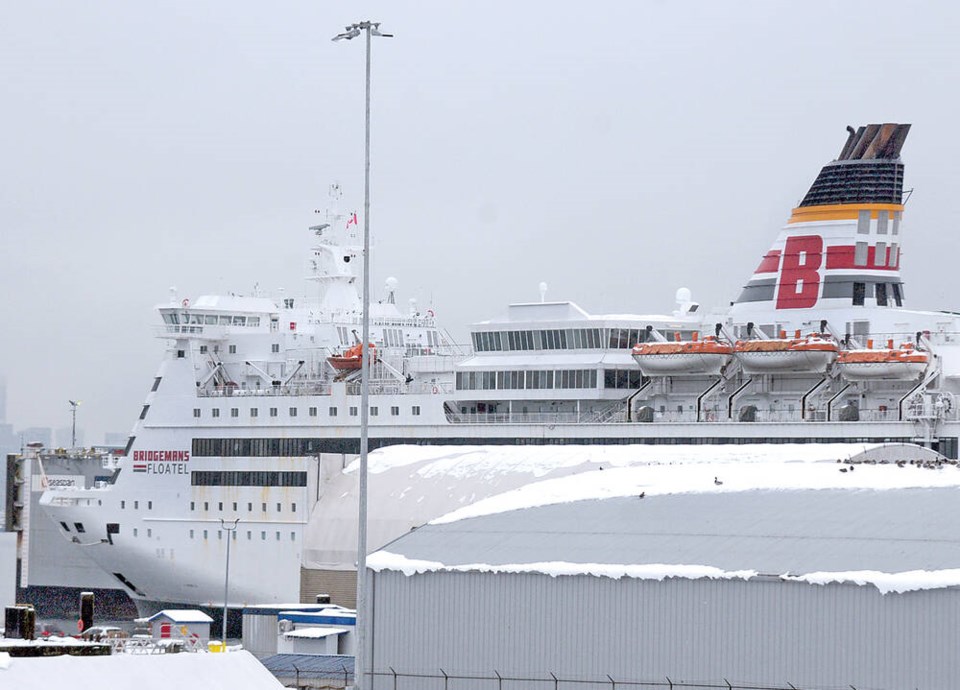A “cruise ferry” that once plied the waters of Europe’s Baltic Sea and was recently a temporary home to 1,500 Ukrainian refugees was in a North Vancouver drydock last week receiving finishing touches to convert the vessel into a ‘floatel’ for LNG plant construction workers.
Among the amenities on board its 450,000 square feet of interior space, the ‘floatel’ has 652 guest rooms with private ensuite bathrooms, a catered dining area, sports lounge, entertainment and meeting rooms, first aid clinic, 8,000-square-foot fitness facility, billiards and games room and onboard laundry facilities.
Since the MV Isabelle arrived at Seaspan’s Vancouver Drydock Jan. 14, Bridgeman Services Group – the company which has currently chartered the vessel – has been loading it with exercise equipment for the fitness facility along with billiards tables, arcade and table games, water dispensers and large flat-screen TVs. All equipment is now in the process of being installed, said company spokesperson Ian Noble.
The MV Isabelle arrived in North Vancouver earlier this month after a 40-day journey from Europe.
In its previous life, the ship transported passengers between Finland, Denmark and Sweden as a ‘cruise ferry’ during the summer months in the 1990s and early 2000s. Between April 2022 and July 2023, the ship housed refugees who had fled the war in Ukraine for Estonia.
Bridgemans has previously refitted and placed other ships into ‘floatel’ service in Canada, Australia and the Philippines, among other locations.
The company acquired the Isabelle for the Woodfibre LNG project because of the vessel’s existing onboard facilities, the number of cabins “and our ability to add environmental systems such as industrial electric heat pumps for heat and cooling,” said Noble.
Before arriving at Seaspan, the ship underwent an extensive refit in Europe this fall with work on its environmental systems and living, dining and recreation areas.
The vessel – first built in Croatia when it was still part of the former Yugoslavia, in 1989 – previously had a number of other refits during its life as a “cruise ferry.”
Bridgemans Services Group has chartered the Isabelle from owners Tallink Grupp for the duration of the Woodfibre project, and holds a purchase option on the vessel.
Woodfibre LNG previously announced it had decided to house workers building the plant in a ‘floatel’ to reduce pressure on local communities that might otherwise see homes and hotels swamped with out-of-town workers.
“A floatel proved to be the best option based on findings related to lowest socioeconomic impact to local community, lowest impact on highway and marine traffic and smallest environmental footprint,” Woodfibre LNG president Christine Kennedy told The Squamish Chief in the fall.
The ship is expected to arrive in Howe Sound later this spring, where it will be moored next to the Woodfibre LNG construction site, southwest of Squamish.
The ship is equipped with sewage and water treatment systems as well as industrial-sized heat pumps, and it will connect to the BC Hydro electricity grid.
Treated sewage from the vessel will be shipped to waste management facilities in B.C.
– with files from the Squamish Chief


